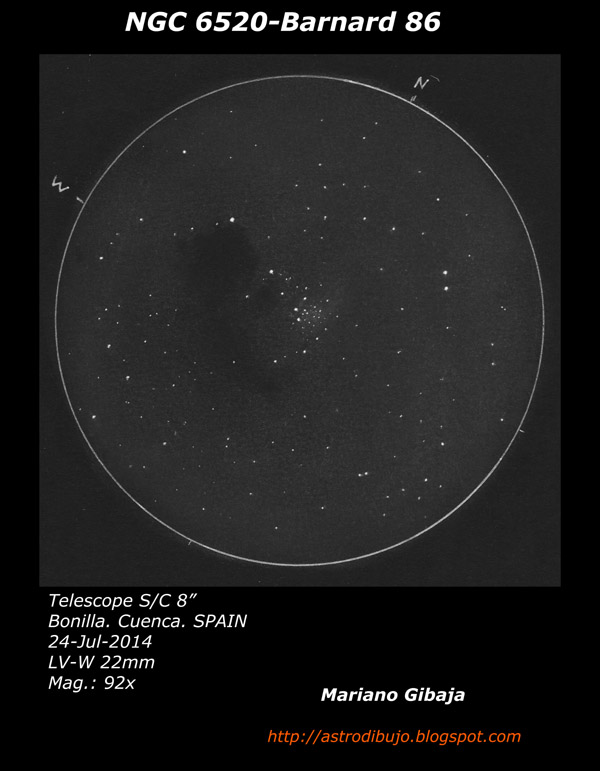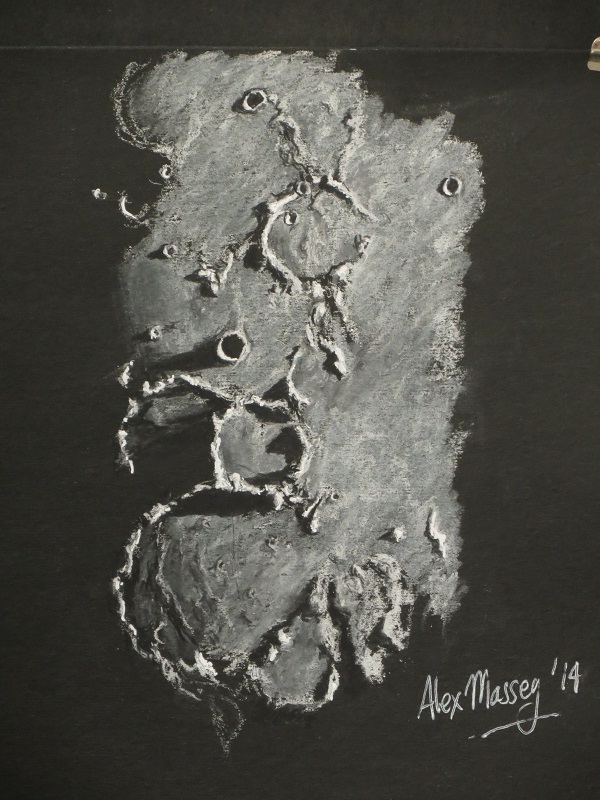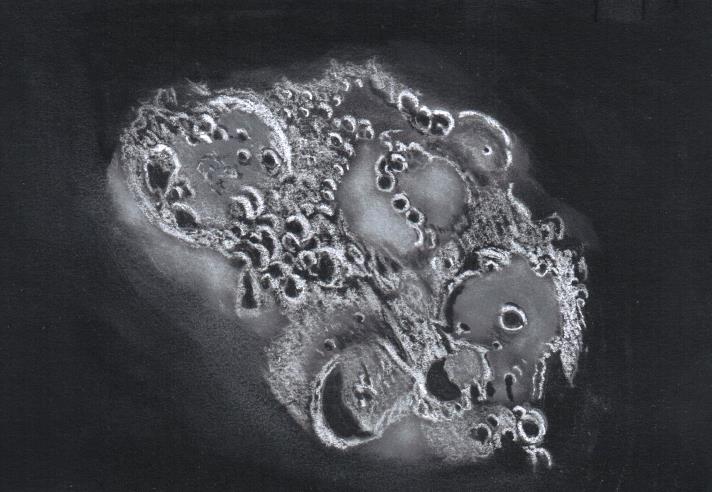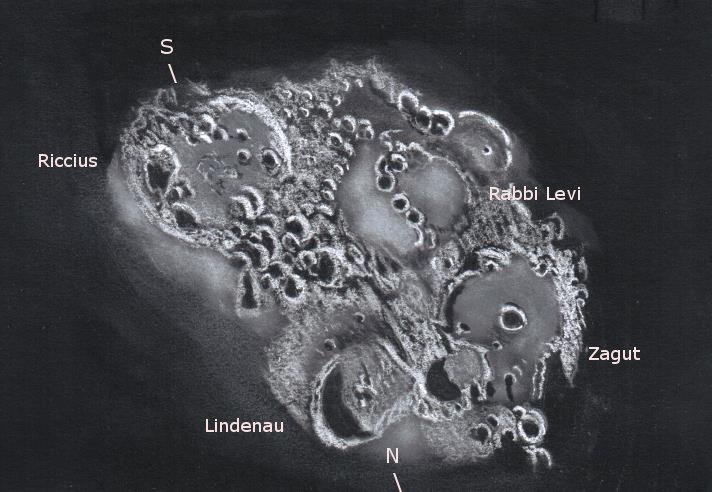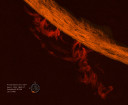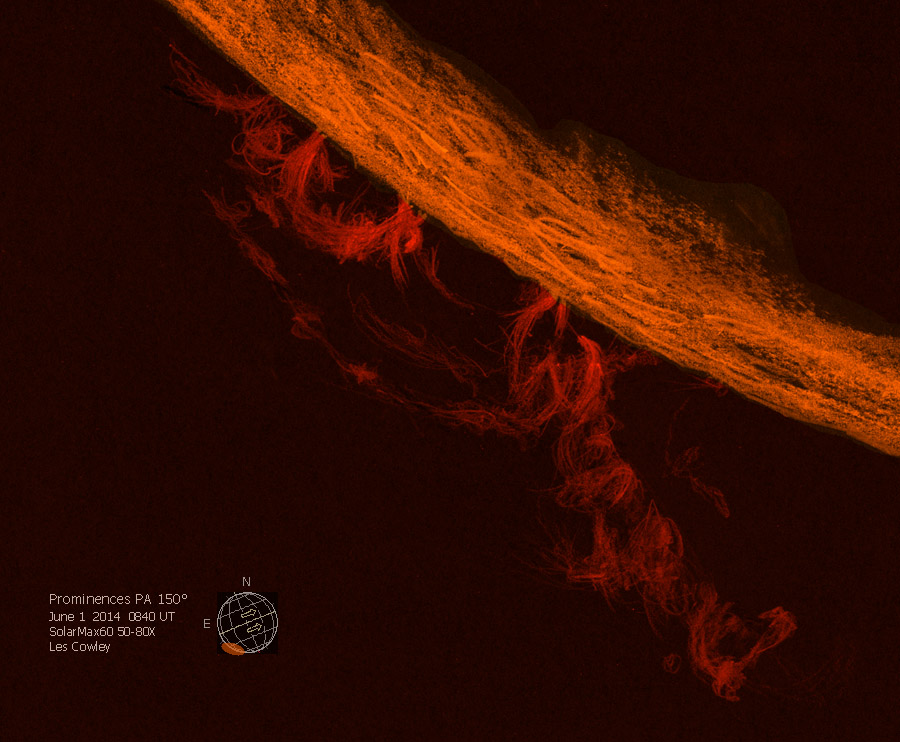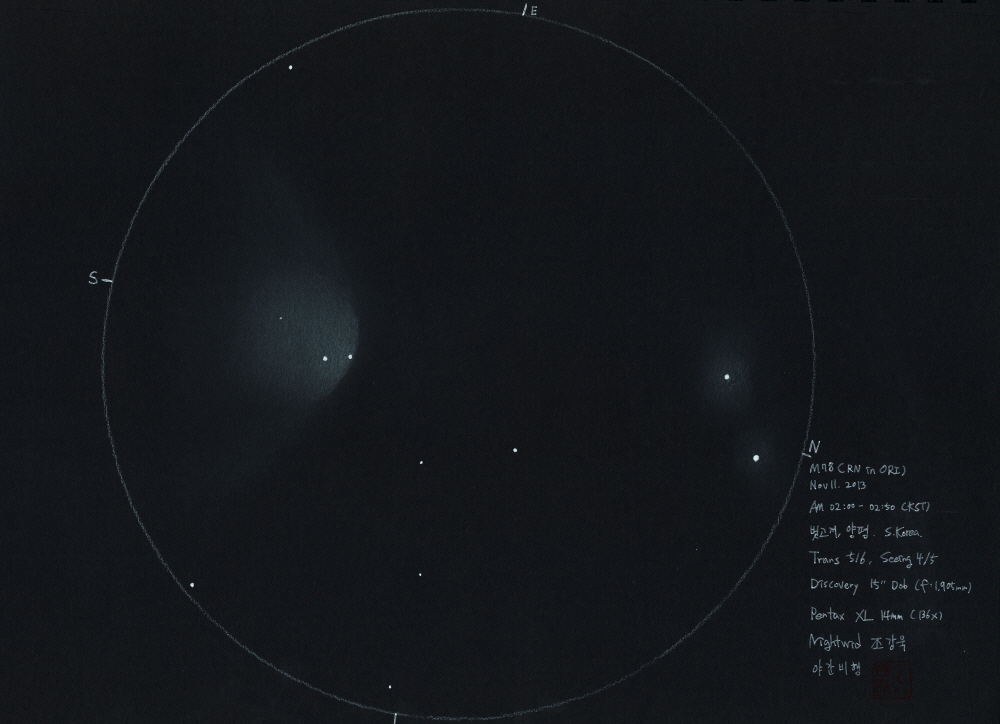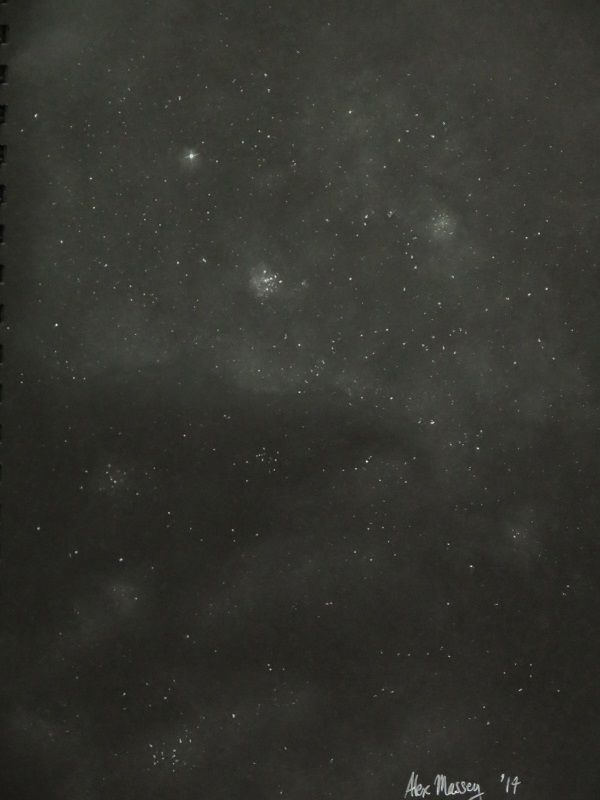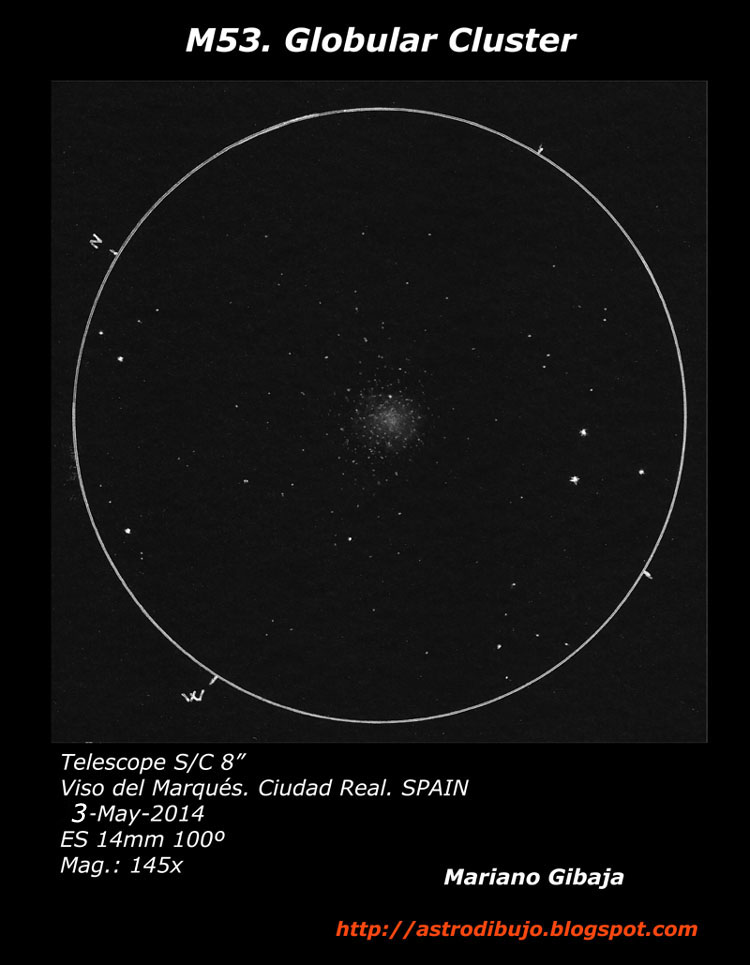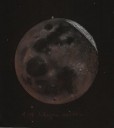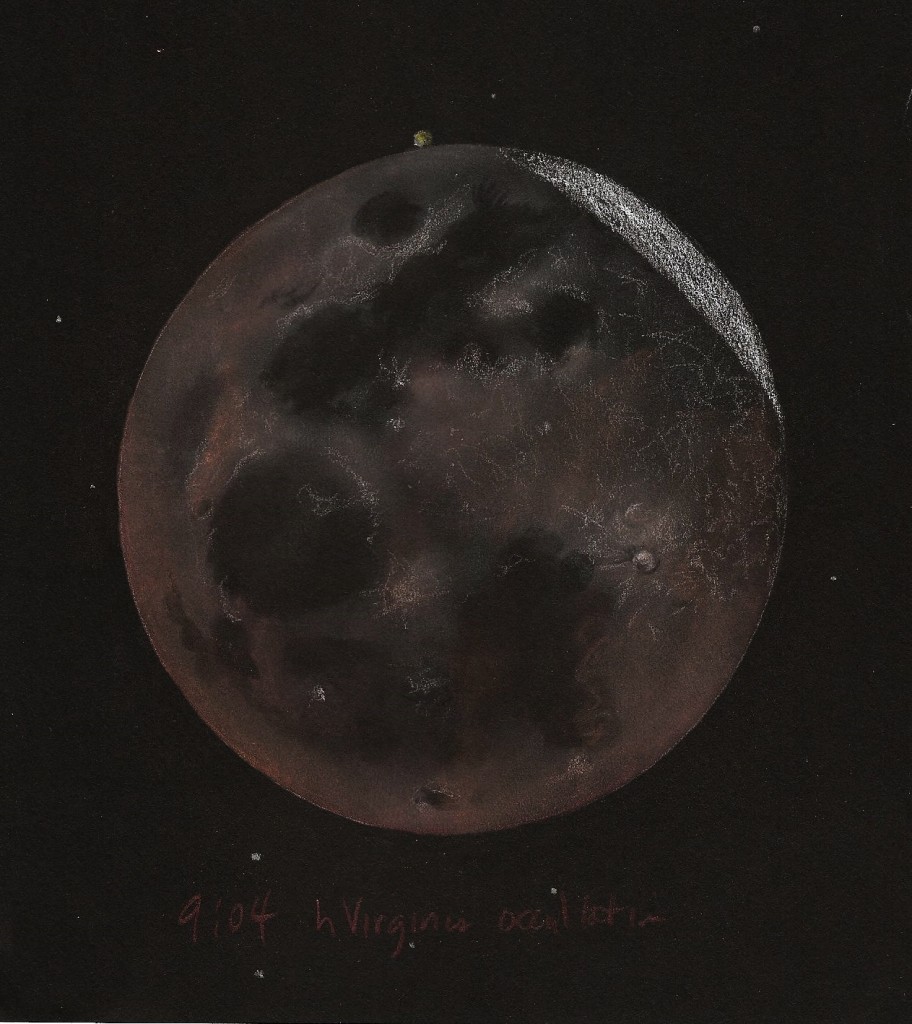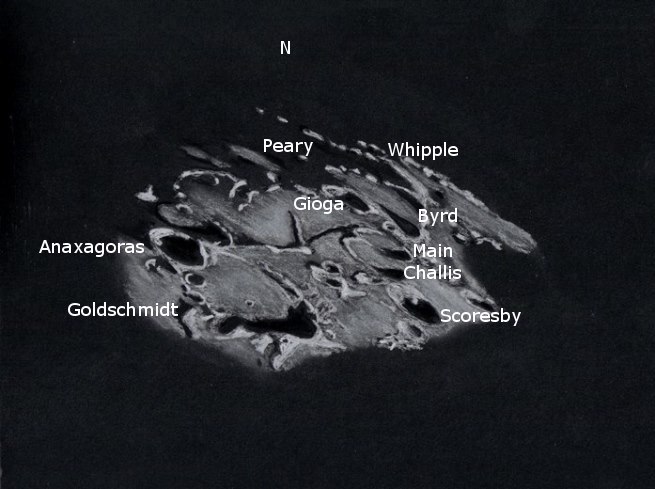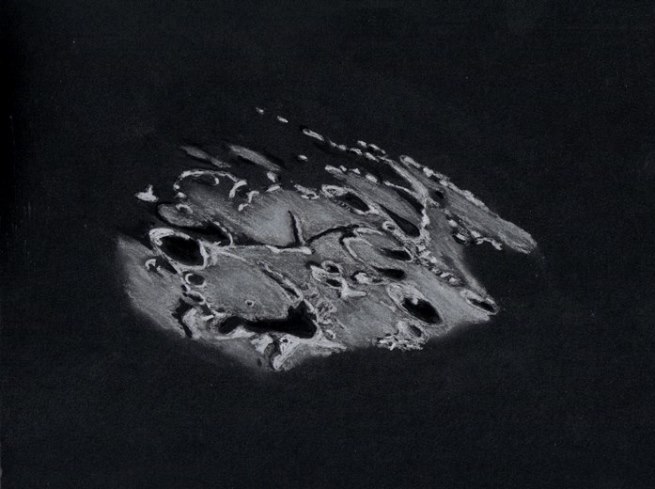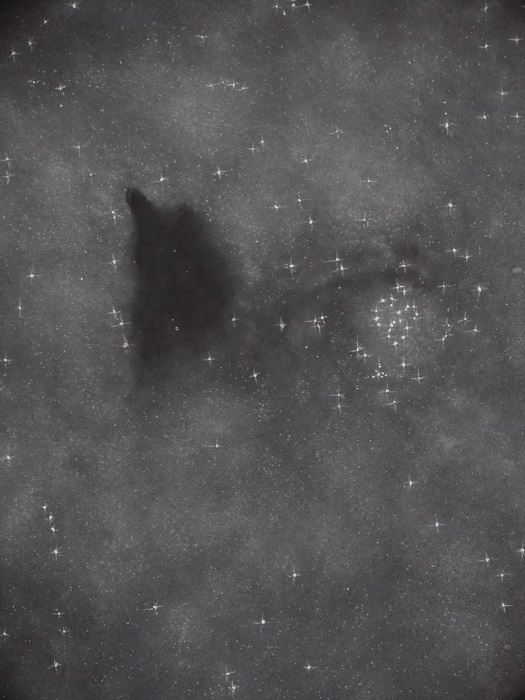
Hi all,
This was the first sketch I completed at Astrofest in Queensland, Australia. I’ve been wanting to sketch this beautiful dark nebula ever since I first laid eye on it some three years ago. This dark nebula, B86, goes by the popular name of “The Ink Spot”. It sits smack bang in the centre of the densest star cloud in the whole sky, the Cloud of Sagittarius. And what sets it off even more is B86 has a gorgeous bright open cluster right next to it, NGC 6570. Both objects are more-or-less the same size as each other, even though both are not very large themselves. But it is the juxtaposition of these two very different objects against the blaze of the Milky Way that makes this pair a spectacular pairing.
Dark nebulae are clouds of dust and gas that are drifting through the Milky Way galaxy. Many of these conglomerations of dust and gas do end up being formed into stars and planets, but most just end up forming the fabric of the galaxy. In fact, the stars that we see actually only form a small percentage of the actual mass of galaxies. By far the greatest amount of a galaxy’s mass comes from this very dust and gas. The Ink Spot is a small patch of cloud. It is a very opaque nebula too. Dark nebulae are categorised according to their opacity, or how dark they are. The scale of opacity goes from 1 (very tenuous) through to 6 (very opaque). While the opacity of The Ink Spot may be a 5, it is because that it sits in the Cloud of Sagittarius that makes is a striking object.
The little open cluster NGC 6520 really works very well in setting off B86. Open clusters are groupings of stars that are all related to each other having been formed out of the same parent cloud of gas and dust. Evidence for this is seen in the spectra of the stars displaying the same chemical make up. The brothers and sisters of our own Sun have been identified this way, with the same chemical signature as our Sun having been identified in several close by stars even though the Sun’s ‘siblings’ have long drifted off away from each other. Open clusters are loose groupings, so even though they formed from the same source, their gravitational connection to each other is not strong enough to keep the group together for too long.
For me, this tiny patch of sky is one of my most favourite. Tiny and oh so precious. Brilliant, dark, stark, ghostly. All in one. Gorgeous.
Alexander Massey.
Object: The Ink Spot, B86 & NGC 6570
Telescope: 17.5″ push-pull Karee dob
Gear: 13mm LVW, 154X
Location: Linville, Queensland, Australia
Date: 24th July, 2014
Media: Soft pastel, charcoal and white ink on A4 size black paper.
Duration: approx. 3hrs


